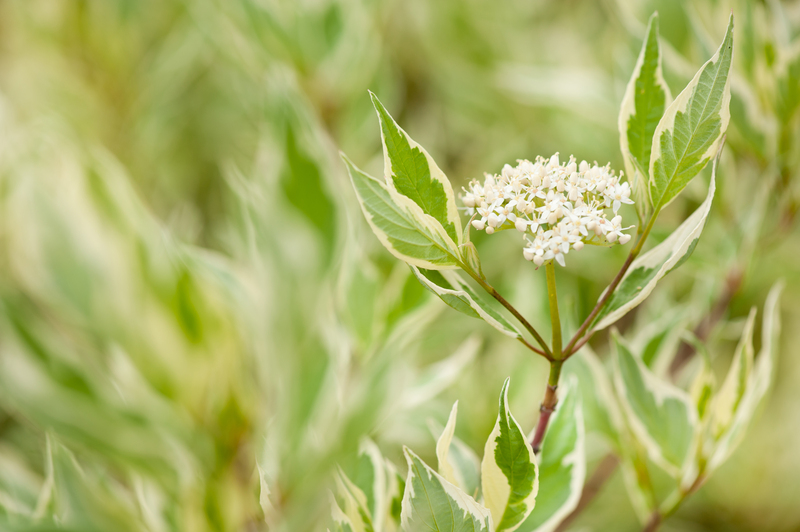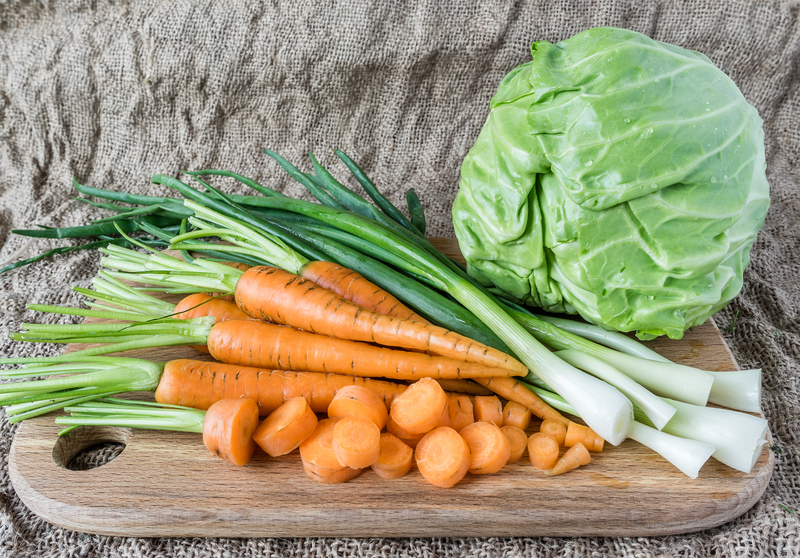Blending Play and Nature in a Child-Friendly Garden
Posted on 03/09/2025
Blending Play and Nature in a Child-Friendly Garden
Creating a child-friendly garden is a wonderful way to connect children with nature while encouraging outdoor play, curiosity, and creativity. Blending play and nature in the garden environment fosters not only physical and emotional development, but also a lifelong love for the natural world. In this comprehensive guide, we'll explore practical and imaginative ways to design and maintain a nature-inspired play garden for children.

Why Blend Play and Nature?
Modern lifestyles often limit children's exposure to natural environments. Screen time, structured activities, and busy routines can restrict their opportunities for unstructured outdoor play. Yet, nature-based play is crucial for healthy child development. Here's why integrating play with nature matters:
- Physical health: Outdoor play boosts activity, coordination, balance, and strength.
- Emotional well-being: Nature promotes calmness, reduces stress, and enhances mood.
- Cognitive growth: Natural settings stimulate curiosity, observation, and problem-solving skills.
- Creativity and imagination: Organic materials and changing seasons spark imaginative play.
- Social skills: Group play in gardens encourages cooperation, negotiation, and empathy.
Key Principles for Child-Friendly Garden Design
When designing a child-friendly garden that blends play and nature, keep these essential principles in mind:
- Safety: Use non-toxic plants, avoid sharp or hazardous items, and provide safe surfaces.
- Visibility: Ensure adults can supervise children easily from key points in the garden.
- Variety: Include diverse elements--plants, textures, heights, colors, and types of play structures.
- Accessibility: Make paths and play areas usable for all ages and abilities.
- Natural materials: Prioritize wood, stone, sand, and living plants over plastic and metal.
- Flexibility: Design spaces that suit quiet play, spirited games, relaxation, and creativity.
Ideas for Blending Play Structures with Natural Elements
Infusing traditional play elements with natural features fosters a seamless blend of play and nature in your garden. Here are inspirational ideas:
1. Living Willow Structures
- Create willow tunnels, domes, or playhouses by weaving flexible willow branches.
- These structures offer shaded hideaways, magical play spaces, and habitats for insects.
2. Natural Climbing Features
- Use tree stumps, logs, boulders, or wooden beams for climbing and balancing challenges.
- Such materials encourage risk assessment, motor skill development, and creativity.
3. Sand and Water Play Areas
- Design a sandpit bordered by rocks or logs; add digging tools, buckets, and natural materials like pinecones.
- Incorporate a bird-safe pond, stream, or water wall for hours of sensory play and discovery.
4. Sensory Pathways
- Install winding paths made from gravel, bark, pebbles, or soft grass for barefoot exploration.
- Line the paths with scented herbs, textured foliage, and plants that invite touch.
5. Secret Gardens and Hideaways
- Plant tall grasses, flowering shrubs, or bamboo screens to create secret nooks for solitary or imaginative play.
- Build a small den or teepee from branches and leafy cuttings as a nature hideout.
6. Edible Gardens
- Involve children in planting, tending, and harvesting vegetables, fruits, and herbs.
- Include child-friendly crops like strawberries, cherry tomatoes, snap peas, and sunflowers.
7. Wildlife-Friendly Features
- Add bird feeders, bug hotels, bat boxes, or small wildlife ponds to attract local birds, bees, and butterflies.
- Encourage observation of the changing wildlife throughout the year.
Choosing Plants for a Child-Friendly Garden
Plant selection is crucial for blending play with nature safely. Consider these guidelines:
- Avoid toxic or allergenic plants: Research thoroughly to exclude hazardous species (like foxglove, yew, or deadly nightshade).
- Favor non-prickly, soft-foliage plants: Lamb's ear, ferns, or ornamental grasses invite touch without risk of scratches.
- Emphasize sensory plants: Scented herbs (mint, lavender), crunchy leaves (sedums), rustling bamboo, or visually striking flowers (zinnias).
- Select robust species: Choose plants that can withstand trampling and regular handling by children.
- Include seasonal variety: For year-round interest, mix evergreen shrubs, spring bulbs, summer flowers, autumnal berries, and winter stems.
Designing Child-Friendly Play Spaces
The best nature-play gardens integrate flexible spaces tailored to different play styles. Consider these zones:
Active Play Zone
- Accommodate games, running, and energetic play with a durable lawn or bark-covered area.
- Add tree stump stepping stones, a natural climbing wall, or a tire swing from a sturdy tree limb.
Quiet Zone
- Create a peaceful corner with benches, bug-viewing jars, and gentle water features.
- Encourage reading, drawing, or cloud-gazing away from noisier play areas.
Creative Zone
- Supply materials for building dens, making mud pies, or crafting with leaves and sticks.
- Install an outdoor chalkboard or paint rocks for artistic activities.
Edible Garden Zone
- Assign raised beds or containers for kids to sow, water, and harvest their own crops.
- Label plants clearly for educational opportunities.
Encouraging Loose Parts Play
One of the most enriching aspects of a child-friendly nature garden is the availability of loose parts--unstructured, natural materials that children can move, combine, and manipulate however they like.
- Include items like sticks, stones, pinecones, leaves, seed pods, shells, and small logs.
- These encourage problem-solving, teamwork, and imaginative play.
- Rotate materials seasonally for renewed interest and discovery.
Seasons of Play: Year-Round Enjoyment
Design your child-friendly play garden to offer experiences in every season:
- Spring: Watch bulbs emerge, hunt for worms, and sow the first seeds.
- Summer: Make daisy chains, collect petals, splash in water, and harvest strawberries.
- Autumn: Jump in leaf piles, gather acorns and conkers, and spot migrating birds.
- Winter: Track animal prints, hang bird feeders, enjoy frosty mornings, and create ice art.
Capitalizing on the changing seasons keeps children engaged and curious about their natural surroundings all year long.
Involving Children in Garden Design and Care
Inclusion is key to nurturing children's connection to their garden. Here's how to involve kids in every stage:
- Planning: Sit down together with pencils and paper to create your dream play garden map.
- Planting: Allow children to choose seeds, dig holes, water new plants, and label sections.
- Building: Encourage kids to help with assembling simple structures and decorating signs or paths.
- Maintenance: Assign easy tasks--watering pots, collecting leaves, feeding wildlife, or harvesting herbs.
- Celebration: Organize garden picnics, treasure hunts, or "garden birthdays" as rewards for their hard work.
Safety Considerations for a Child-Friendly Garden
To ensure your nature-play environment remains as safe as it is magical, follow these precautions:
- Check plants: Regularly inspect for hazardous, toxic, or overgrown vegetation.
- Surface safety: Use cushioned surfaces under climbing structures to minimize injury from falls.
- Supervision: Keep planters and play features in sight of adult gathering areas.
- Tool safety: Store gardening tools out of children's reach unless supervised use is intended.
- Water safety: For ponds or water play, install safety grilles and never leave young children unsupervised.
- Pest control: Avoid harsh chemicals; instead, use organic and manual solutions.
Tips for Small Spaces and Urban Gardens
You don't need acres to create a nature-inspired child's garden. For balconies, rooftops, or small urban yards, try these strategies:
- Container gardening: Use pots and planters for flowers, herbs, and even climbing beans.
- Vertical gardens: Grow strawberries or salad greens in wall-mounted pockets or trellises.
- Mini sand or water tables: Compact, movable play areas bring nature play to any outdoor space.
- Portable loose parts: Fill baskets or tubs with natural items for creative play indoors or out.
- Window feeders: Watch wildlife close-up with suction-cup bird feeders or butterfly-attracting plants.

Benefits of Blending Play and Nature in a Child-Friendly Garden
By strategically blending play with nature in your garden, you support your child's whole development and foster happiness:
- Enhanced well-being: Kids who play outside are calmer, more focused, and physically healthier.
- Environmental awareness: Early experiences with plants and wildlife cultivate respect for the planet.
- Stronger family bonds: Gardening and playing together build lasting memories and connections.
- Lifelong learning: Nature provides endless opportunities for discovery, questions, and exploration.
Conclusion: A Magical Meeting of Play and Nature
Blending play and nature in a child-friendly garden isn't just about landscaping--it's about creating a sanctuary for joy, learning, and growth. Whether your outdoor space is a wild meadow, a compact patio, or an urban balcony, you can craft an environment where nature and play unite in harmony. With thoughtful design, creative inspiration, and a sense of adventure, your garden becomes a treasured setting for childhood memories that will last a lifetime.
Start blending nature and play in your own garden today, and watch as your children blossom alongside the wonders of the natural world.

